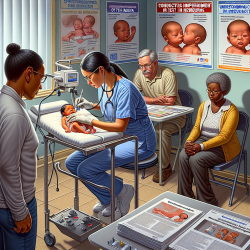Introduction
The terms "major" and "minor" surgery have been used for centuries, yet they remain undefined in the medical community. This lack of clarity poses significant challenges for practitioners, educators, and researchers. A recent study titled Major and Minor Surgery: Terms Used for Hundreds of Years That Have Yet to Be Defined explores these issues and offers insights that can improve clinical practices and educational outcomes.
Understanding the Research
The research highlights that while these terms are ingrained in medical education and practice, their lack of precise definitions can lead to misinterpretations in clinical settings and academic literature. The study emphasizes the need for a more evidence-based approach when using these terms to describe surgical procedures.
Implications for Practitioners
For practitioners, the study suggests several actionable insights:
- Critical Evaluation: Before categorizing a procedure as major or minor, consider patient-specific factors such as comorbidities and nutritional status.
- Enhanced Communication: When discussing procedures with patients and families, provide a detailed explanation beyond the simplistic major/minor classification to set realistic expectations.
- Continued Education: Stay updated with the latest research and guidelines to ensure the use of precise terminology in practice.
Implications for Educators
In the realm of medical education, the undefined nature of these terms can impact the training and evaluation of surgical residents. Educators are encouraged to:
- Curriculum Development: Incorporate discussions on the limitations of these terms and the importance of context-specific evaluations in surgical training programs.
- Assessment Criteria: Develop assessment tools that go beyond the major/minor dichotomy, focusing on the complexity and patient-specific factors involved in surgical procedures.
Encouraging Further Research
The study calls for more research to establish clear definitions and guidelines for these terms. Practitioners and educators are encouraged to participate in and contribute to research efforts that aim to refine surgical terminology. This will not only enhance clinical practices but also improve educational frameworks.
Conclusion
While the terms "major" and "minor" surgery are deeply embedded in medical practice, their lack of definition presents challenges that need addressing. By adopting a more nuanced and evidence-based approach, practitioners and educators can improve patient outcomes and educational quality. To read the original research paper, please follow this link: Major and minor surgery: Terms used for hundreds of years that have yet to be defined.










